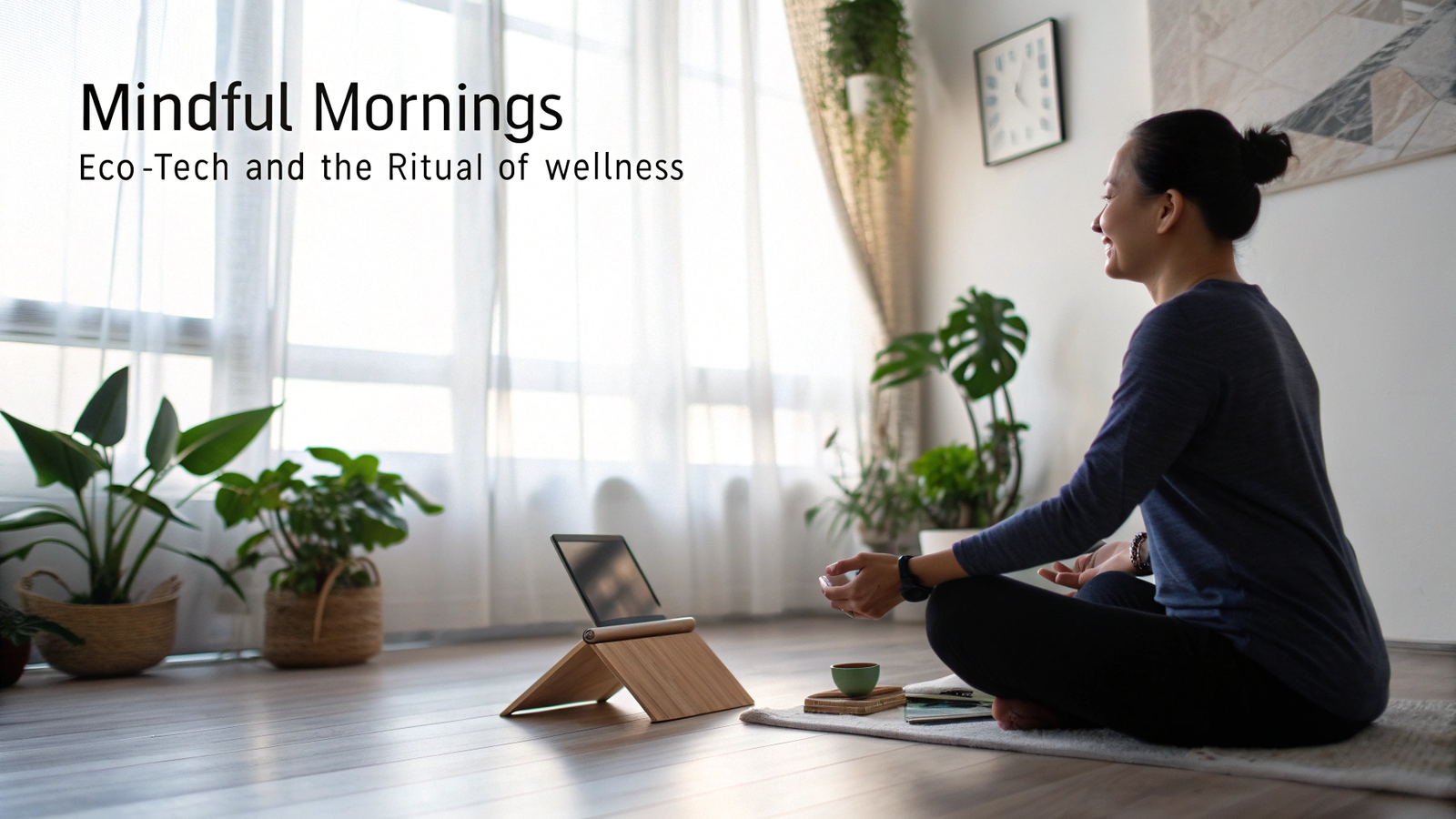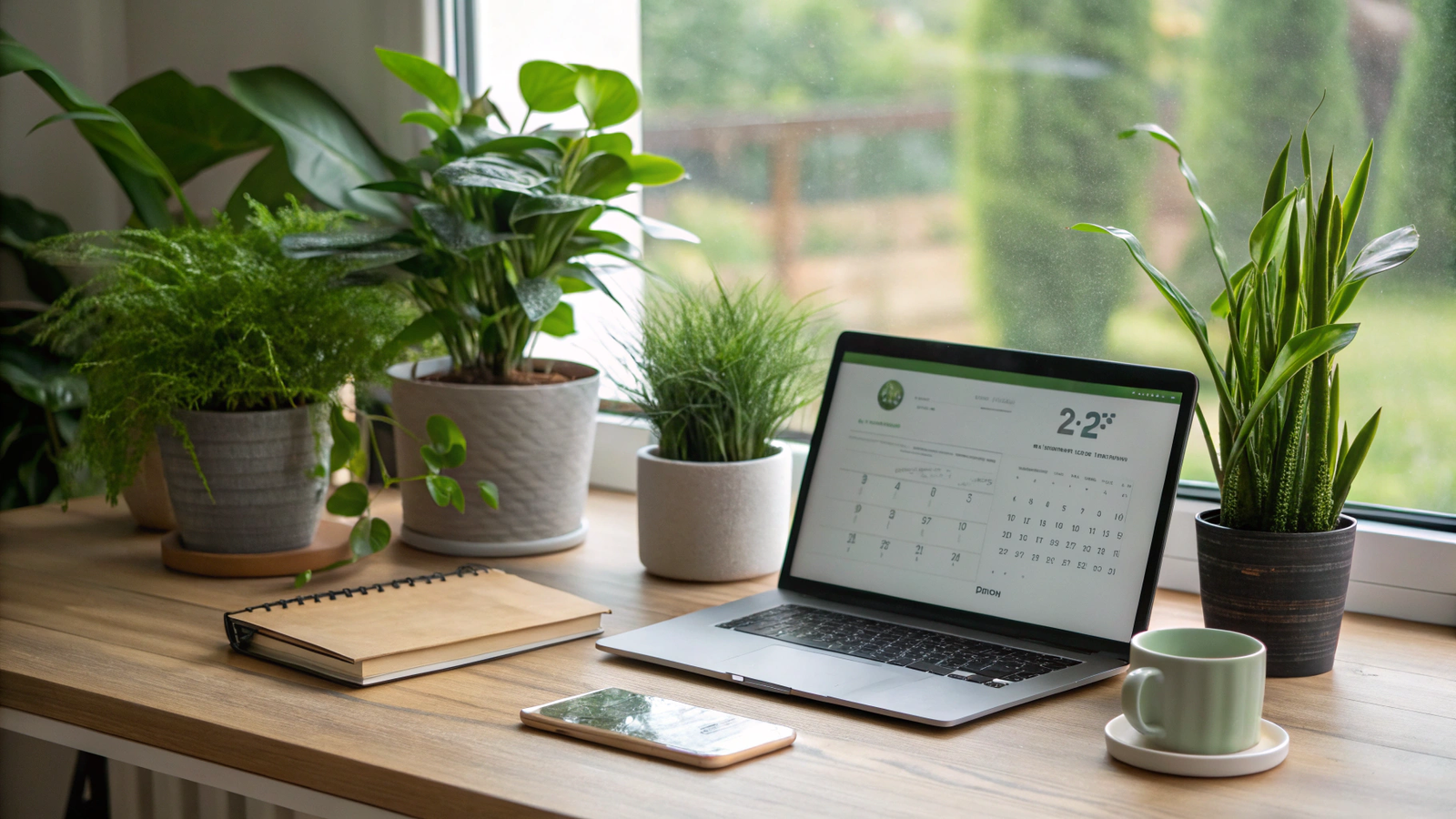
Balance by Design: Using Technology for Greener, Calmer Daily Habits
In today’s fast‑paced world, our daily habits often oscillate between stress and convenience. We rush through routines, grab coffee on the go, toggle notifications, and chase productivity—all at the expense of calm and environmental mindfulness. Yet, the same technology that contributes to overwhelm can also be harnessed to restore balance: to design days that feel gentler on the mind and lighter on the planet.
“Balance by design” is about intentionally using technology to cultivate greener and calmer habits—small routines powered by connected tools that reduce waste, slow things down, and align our well‑being with conscious living. This article dives into how you can architect your day—from sunrise to bedtime—with tech that makes sustainable choices easier, emotional peace more accessible, and careless consumption less likely.
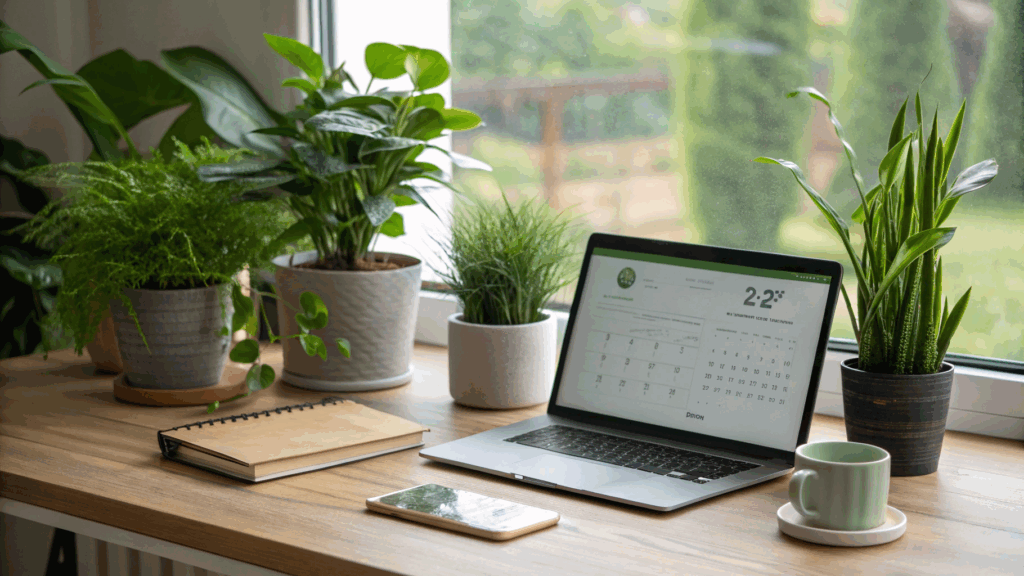
1. The Philosophy of Balanced Design
At its core, balanced design means merging sustainability and wellness through tools that:
- Offer ambient feedback—transparent insights that nudge behavior without nagging.
- Automate low‑effort actions—so green habits happen in the background.
- Encourage mindful pauses, not just efficiency.
- Empower personalization—supporting habits that resonate with individual rhythms, not one-size-fits-all.
Unlike tech centered purely on productivity or entertainment, balanced-design tools support living that’s slower, lighter, and more connected—both with ourselves and the planet.
2. Morning Moments: Waking Up Slowly and Sustainably
Circadian-Aware Smart Lighting
Smart bulbs from systems like Philips Hue, LIFX, or Nanoleaf can wake you gently through a sunrise simulation—gradually increasing brightness and shifting color from warm amber to soft daylight. This approach regulates cortisol and melatonin rhythms, boosting alertness without screen-based stress. And with LED efficiency and smart features like automatic shut-off, it uses minimal energy.
Thermostat Warm‑Up with Presence
Smart thermostats such as Nest or Ecobee learn your habits and begin gently warming your bedroom only shortly before you wake, based on motion sensing and geofencing. You wake to comfort, not a cold shock, powered by only the energy you need.
Filtered Water, On‑Demand
Smart water systems like LARQ or Hydroviv filter water sustainably and remind you to hydrate—reducing plastic waste and over-boiling. Eco‑mode smart kettles or connected French presses boil only the amount needed—turning your hydration ritual into a mindful, low‑waste moment.
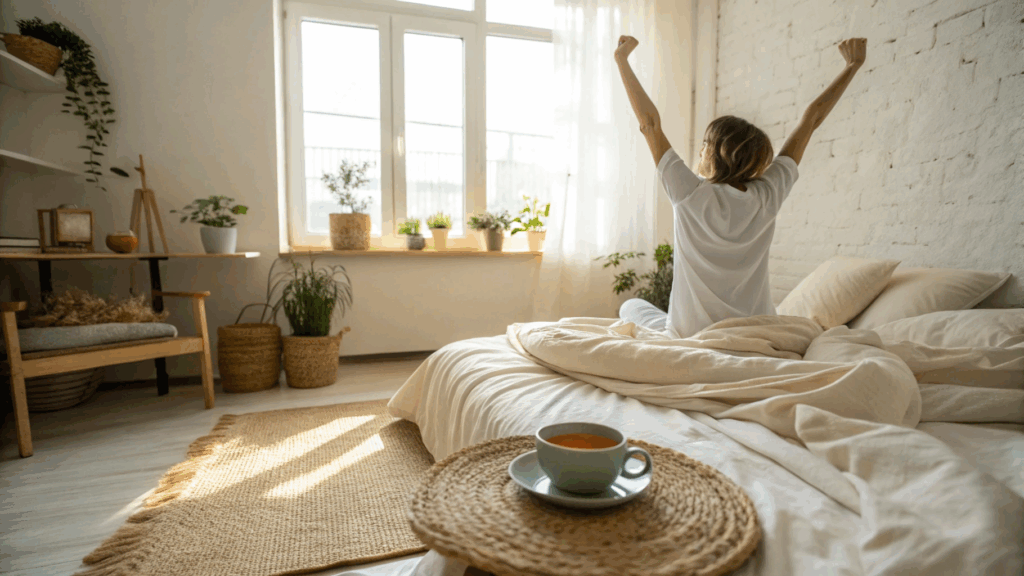
3. Daybreak Movement: Energize with Ease
Guided Stretching via Smart Mirrors or Apps
Devices like Mirror or fitness apps such as YogiFi provide quick, on‑demand gentle stretches or yoga sequences tailored to morning energy levels. Integrated feedback helps you move with intention rather than rushing into motion, and you can follow without commuting or leaving reliance on high‑carbon studios.
Wearable Awareness
Trackers like the Apple Watch, Oura Ring, or Fitbit offer morning wellness insights—restedness, stress score, readiness indicators. These data-driven cues can guide whether to energize immediately, take a deep-breath interlude, or slow down with breathing exercises.
4. Mindful Bathing and Grooming
Water-Saving Fixtures and Smart Timing
Smart showerheads such as Nebia by Moen or Hai Smart Shower measure flow and heat, offering timers that reduce usage up to 45%. When integrated with water sensors or apps, they can remind you to stay within a sustainable water budget—combining ritual with conscious use.
Hygienic Smart Tools
Touchless faucets conserve water while smart mirrors with low-energy LEDs and defogging sensors help streamline routines. Some provide reminders to rinse or floss mindfully, turning grooming into wellness moments that respect both your body and the environment.
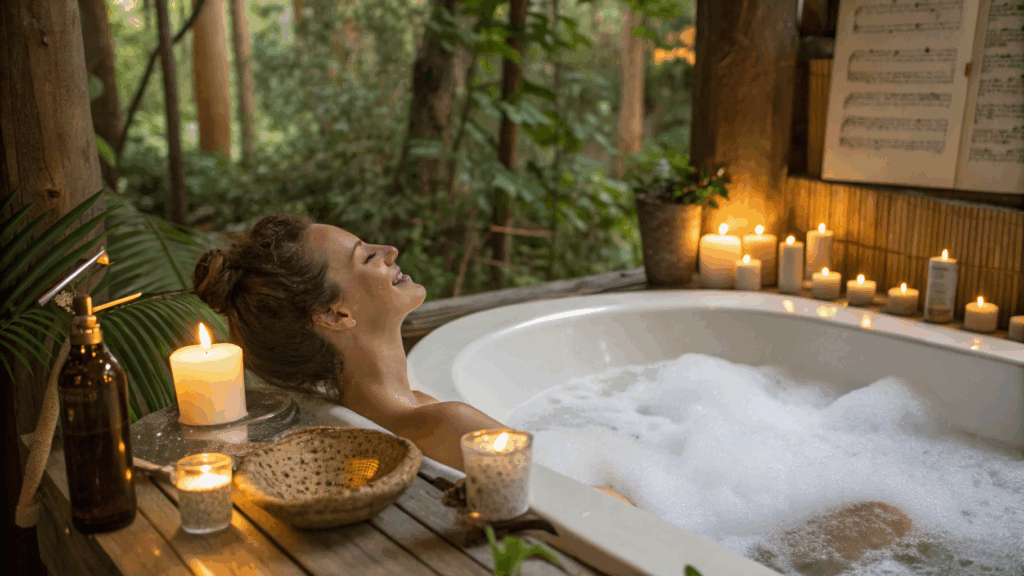
5. Conscious Cooking and Breakfast
Connected Appliances for Efficiency
Smart induction cooktops with auto shut-off, precision toasters, and programmable devices—like coffee makers with eco‑mode—help you use only what’s needed. Meals are prepared more consciously, using less energy and reducing idle-on waste.
Food‑Waste Prevention via Smart Fridge
Models like Samsung Family Hub or LG ThinQ track food inventory, expiration dates, and suggest recipes. With alerts to use items soon and automated shopping reminders, they reduce waste and encourage local or seasonal ingredient choices.
6. Energy Awareness in Use
Smart Plugs and Device Scheduling
Smart plugs (TP-Link, Wemo, Kasa) let you power‑down appliances remotely, batch clean cycles during peak renewable generation, and eliminate vampire loads. You can schedule devices to run during times when your grid is greenest—or when solar panels are producing most.
Whole‑Home Monitoring
Energy monitoring systems like Sense, Emporia, or integrated smart meters provide real‑time data for each electrical circuit. With this information visualized in an app, you can see how small behavioral tweaks—like switching off standby electronics—add up to big savings.
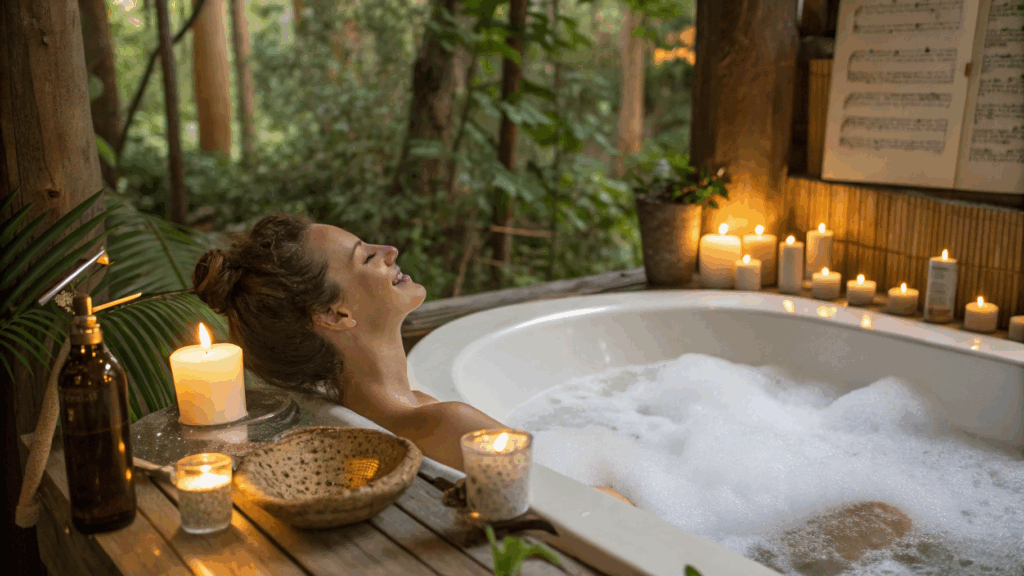
7. Break-Time Rituals: Refresh and Reset
Ambient Pomodoro Reminders
Apps or devices like Forest or Time Out sync work-break cycles with gentle reminders. Some smart lights can pulse softly before break time, inviting you to stand, breathe, and step away—restoring focus and calming overstimulation.
Indoor Air Quality and Mood
Air monitors such as Awair, Airthings, or Honeywell sense CO₂, humidity, and VOC levels. If air quality dips, the system can prompt opening a window or running an air purifier. This fosters short mindful breaks rooted in environmental awareness.
8. Mealtime Mindfulness
Energy-Efficient Cooking Modes
Dishwashers or ovens with eco cycles adapt run-time and temperature to the load, minimizing water and power. Meal-prep smart apps (like Mealime, Paprika) help plan minimal-waste meals with seasonal produce.
Compost and Smart Sorting
Home composters (Lomi, Reencle) digest scraps quickly, fitting urban spaces. Smart sorting bins like Townew or future smart recycling tools can streamline proper waste separation—making recycling second nature.
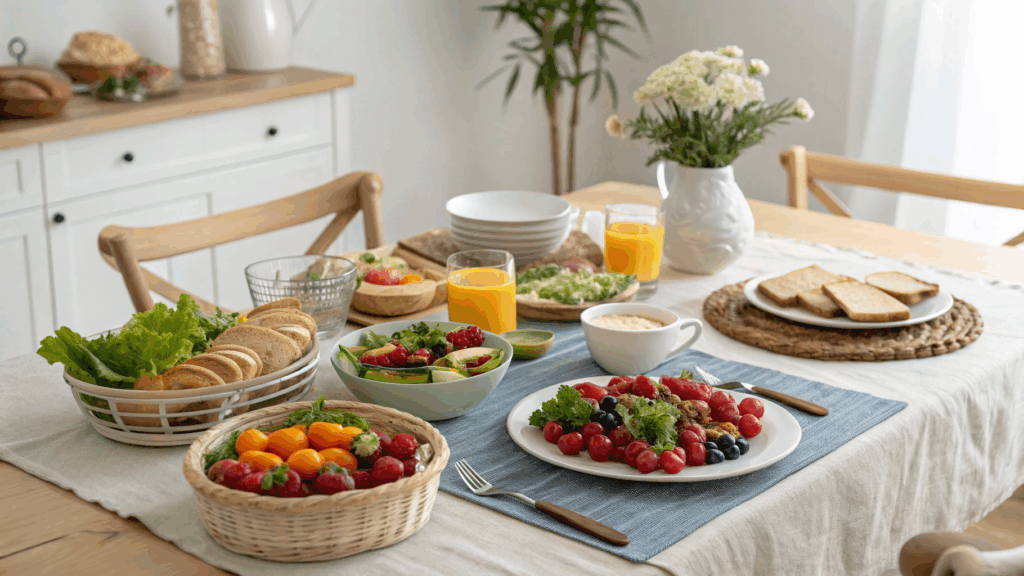
9. Calm Evening Rituals
Smart Lighting for Wind‑Down
Lighting that transitions to warm hues in the evening helps reduce blue light exposure, easing the release of melatonin and promoting better sleep. Actions like “Goodnight” scenes can automate lights off, blinds closed, thermostat adjusted—all configured to conserve energy while supporting rest.
Bedroom Climate and Sleep Modes
Smart thermostats and fans adjust to sleep patterns, maintaining optimal cooler conditions for restorative rest. Some systems also sync with blackout smart shades and sleep-tracking wearables to optimize your rest environment naturally.
10. Technology for Reflection and Digital Declutter
Screen-Time Awareness
Features like Digital Wellbeing or Screen Time help limit app and notification use before bed. Smart displays can offer gentle reminders to unplug, promoting evening reflection rather than scroll and distraction.
Mindful Journaling and Meditation
Apps such as U Earth Headspace, Calm, or Insight Timer can trigger a post-dinner meditation or journaling prompt via your smart speaker or phone—encouraging mental declutter, gratitude, or goal review. Some even sync with wearables to suggest optimal timing based on stress levels.

11. Data, Metrics, and Intentional Feedback
Sustainability Dashboards
Platforms such as Home Assistant or utility-linked smart‑home dashboards display home energy use, indoor temperatures, water usage, sleep quality, and more. Visualizing data in daily, weekly, or monthly views supports ongoing reflection and adjustments.
Habit Gamification
Eco‑apps like AWorld, JouleBug, or Capture reward users for waste reductions, energy savings, recycling, or mindful habits. Competing with yourself or others helps turn habit-building into mindful play—reinforcing consistency.
12. Design for Accessibility and Lifelong Use
Balanced design doesn’t demand tech literacy. Many devices offer:
- Voice‑first interfaces (via Alexa, Google, Siri)
- Intuitive, app-free presets
- Simple automations and dashboards built into services
- Compatibility with accessibility features and multi-user households
Because sustainable calm should be inclusive, not elitist, systems that minimize setup while maximizing impact are least likely to be abandoned.
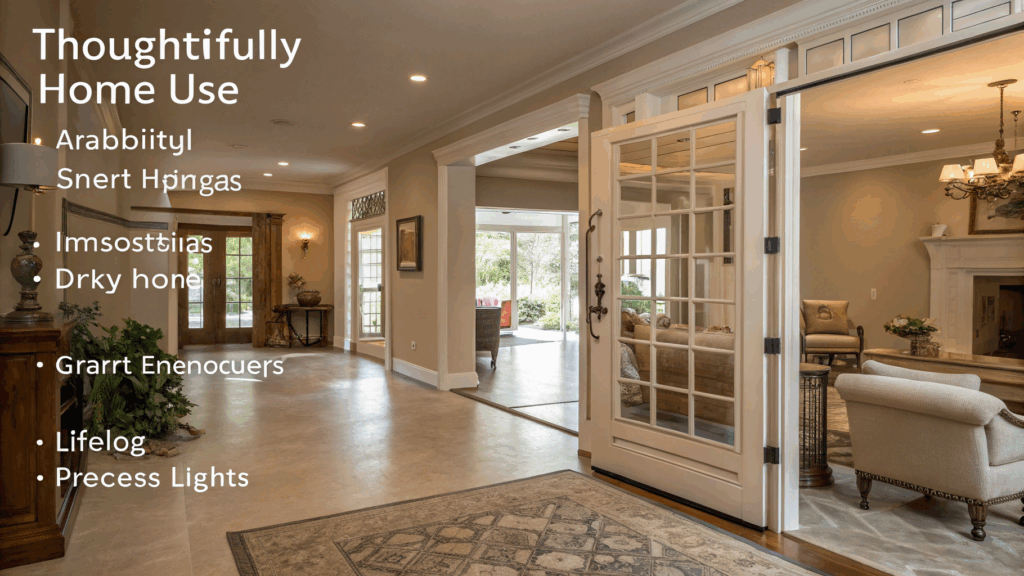
13. Overcoming Challenges
Even balanced design faces obstacles:
- Upfront cost: Smart gear can look pricey, but incentives, rebates, and long‑term savings help offset initial investment.
- Privacy and security: Choose vendors committed to data protection, local processing, or offline modes.
- Smart fragmentation: Favor ecosystems that integrate widely or use open‑source platforms like Home Assistant.
- E‑waste: Recycle or trade in old devices, and favor modular, repairable tech where possible.
These considerations ensure that even sustainable tech remains aligned with planetary values.
14. Real‑World Routine Examples
Start‑to‑Finish Day Template
| Time | Ritual | Design Purpose |
|---|---|---|
| 6:30 AM | Wake to rising smart lights | Gentle alertness, minimal wake‑shock |
| 6:35 AM | Smart thermostat warms room | Comfort without wasted heating |
| 6:40 AM | Hydration via filtered smart water | Plastic‑free, tracked list for filter health |
| 6:45 AM | Wearable tells Resting HR & readiness | Decide gentle stretch or breathwork |
| 7:00 AM | Guided yoga sequence on smart mirror | Energize body without commuting or waste |
| 7:20 AM | Eco‑coffee maker / induction breakfast | Short energy ritual, low waste |
| 8:00 AM | Smart plug devices on, energy dashboard shows baseline | Awareness of morning energy use |
| 10:00 AM | Ambient Pomodoro break via soft pulse | Work-life rhythm, eco break built in |
| 12:30 PM | Eco‑cook lunch or use meal app with recipe suggestions | Reduce food waste, smart choices |
| 3:00 PM | Air quality monitor suggests window open | Seasonal ventilation, indoor freshness |
| 5:30 PM | Smart plug self-shut-off & end-of-work scene | shuts devices, resets energy baseline |
| 6:00 PM | Dinner with meal‑planning app prompts | Mindful eating without overconsumption |
| 9:00 PM | Smart lights transition to warm hues | Prepares body for wind‑down |
| 9:15 PM | Guided meditation via smart speaker | Emotional closing of the day |
| 9:30 PM | “Goodnight” scene—lights off, thermostat lower, water leak sensor armed | Eco-safe sleep setup |
This sort of gently automated structure is both sustainable and peaceful—ritual that doesn’t require effort, only intention.
15. Why Balance by Design Matters
The average person spends thousands of hours at home, interacting with tech systems. Without intentional design, that interaction becomes passive and often wasteful. However, when systems are thoughtfully chosen and configured, our daily habits—those small micro‑moments of choice—can become pauses for reflection, care, and impact.
- Greener because energy, water, and resource use become optimized, measured, and minimized.
- Calmer because we wake and wind down more gently, reduce screen stress, and cultivate presence.
- Sustainable because routines support well‑being, reduce consumption, and build personal environmental awareness.
Balanced design is low friction, high care. It’s about living gently—toward ourselves and toward the earth.
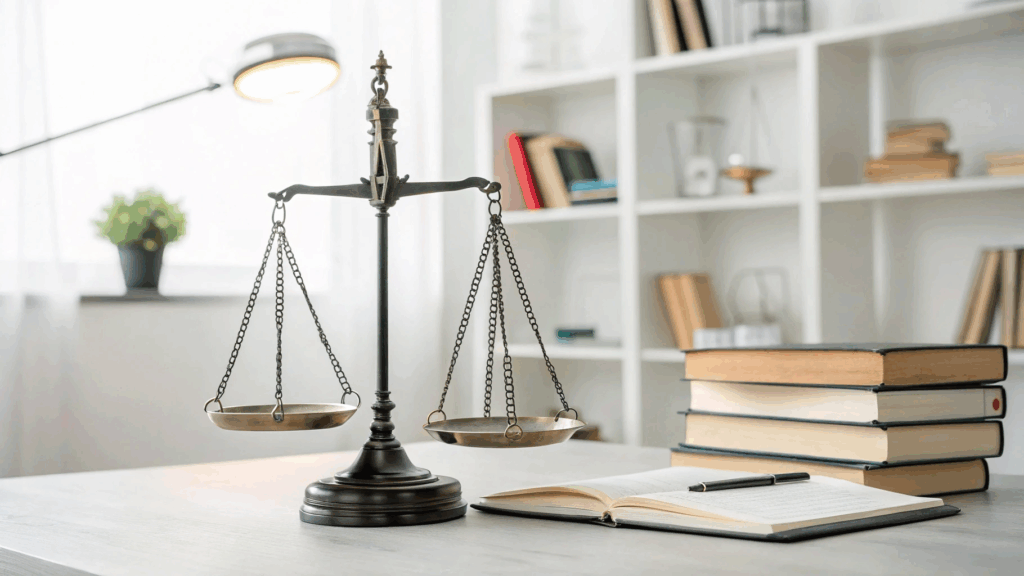
Conclusion
Technology often gets blamed for distraction, overconsumption, and disconnection. But in the right hands—and with the right design philosophy—technology can also serve as an invisible partner in sustainable calm.
Balance by design is more than a habit stack—it’s a perspective: that wellness and eco-stewardship are intimately connected, and that daily ritual can be reimagined not as mindless routine, but as mindful alignment with values.
By wiring your home and routine around low-energy devices, ambient feedback, and simple automations, you can live more intentionally, breathe a little easier, and build habits rooted in care—for yourself and the planet.
